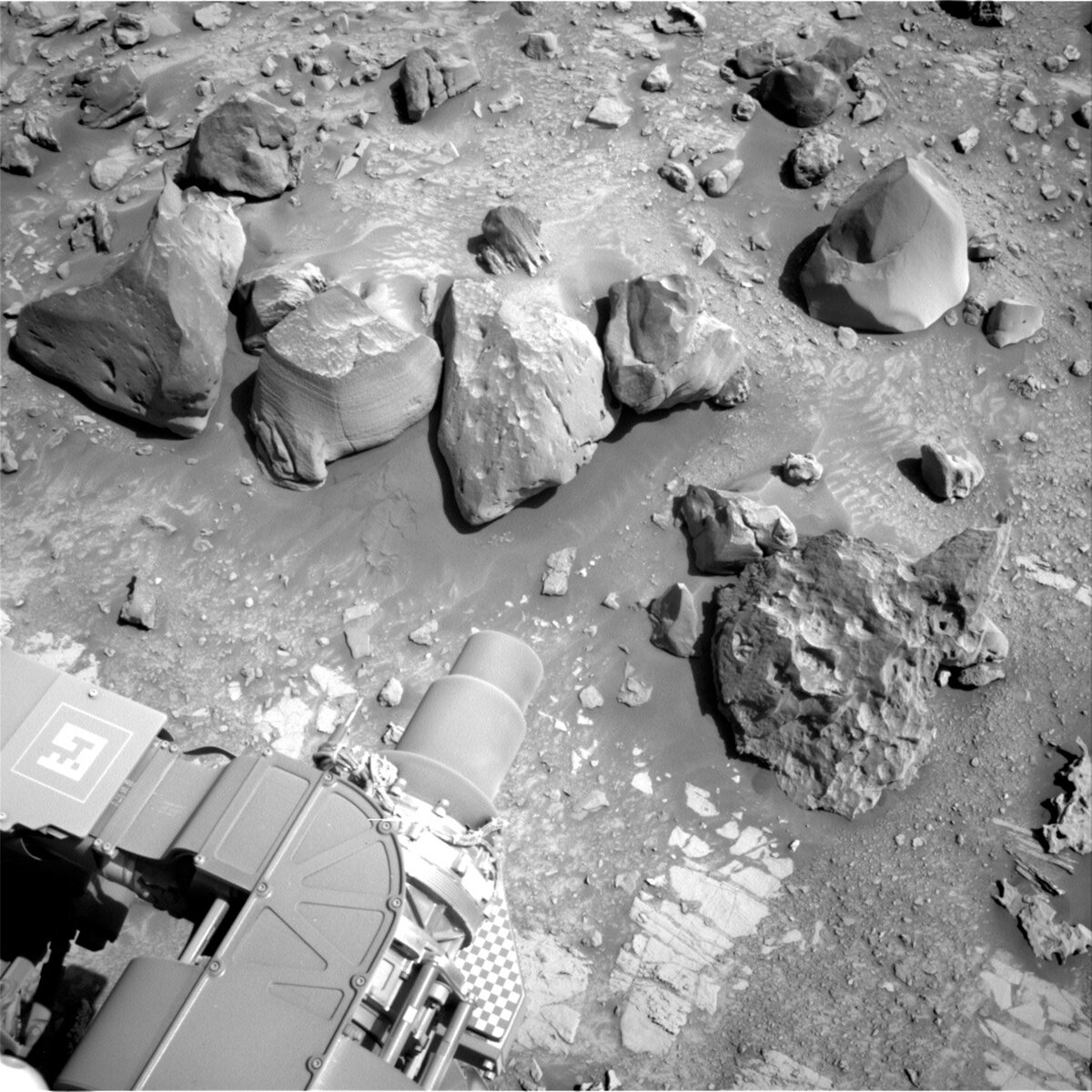4 min read

Earth planning date: Monday, August 21, 2023
While Southern California was hunkering down during a rare hurricane-ish weather event, our contrasting dry and cold rover was working through the weekend plan we sent up last Friday. And unlike last Friday, all activities (including the ever-elusive Gediz Vallis ridge ~2 meter climb!) executed successfully and put us right in front of an array of ridge rocks for us to “snack” on for a few sols. We’re about 50 meters from the top of the ridge, and this location may be the last stop on our upper Gediz Vallis ridge (uGVr) detour. There’s currently no future plan to get this close to uGVr geology again, so making sure we get the data we need here trumps driving away. Therefore, we’re skipping our usual drive-per-plan and staying here until at least Wednesday so we can fit in two contact science targets this plan and a bonus target pre-drive in Wednesday’s plan. And since we took a Mastcam 360 panorama at Friday’s location, there’s lots of good imagery to digest while our rover picks away at the topographical tapas on our plate (can you tell it’s lunchtime and I’m going on vacation to Barcelona next week?)
The first sol of this plan starts with a block of Remote Sensing Mast (RSM) instrument activities. Navcam will point the RSM at the horizon searching for dust devils and atmospheric changes, then Mastcam takes over and points the RSM at our workspace to take ~65 stereo images of the boulders before any contact science happens. ChemCam will point the RSM at a pointy and pitted boulder named “Epidaurus” (the boulder in the lower-half of this Mastcam image), and Mastcam will keep the RSM right where it is to document ChemCam’s LIBS effort. Then it’ll be time for the main course: our arm activities. The arm will unstow for the first time since sol 3921 and use our DRT to get the stratified boulder named “Mytikas” (the boulder in the right-lower-half of this Mastcam image) as shiny as possible for APXS and MAHLI. Then MAHLI will take over the turret and take a full suite of images - that’s four positions from 25cm, 5cm, and 1cm away - of the Mytikas DRT spot before performing a fancy mosaic down the vertical face of Mytikas to document its stratigraphy from 5cm away. Finally, MAHLI will do another full suite of a third boulder named “Helmos” (the boulder in the lower-right side of this Mastcam image) before APXS gets really close to “sniff” the Helmos and Mytikas targets for the remainder of the evening.
The second sol of this plan is less hungry, including just two RSM blocks in the midday and evening before wrapping it up and waiting for the instructions we’ll decide on during Wednesday’s planning. Those RSM blocks contain a Mastcam multispectral stereo image of the Mytikas DRT spot, a larger dust devil survey from Navcam, and a second ChemCam LIBS on a boulder further away named “Patmos.”
Before I head off to lunch, I’d like to share a part of planning that’s been the tradition here at Malin Space Science Systems. Normally on my blogging days I command both the MAHLI and MARDI cameras, but MARDI is usually only commanded after we drive. Since there’s no drive (and no MARDI image) this plan, it’s tradition to write a haiku instead of our usual report. Here’s the contents of our MARDI report today:
"No MARDI in the plan.
Three rocks in our view
So before we say adieu
We must touch them all."
Written by Natalie Moore, Mission Operations Specialist at Malin Space Science Systems







